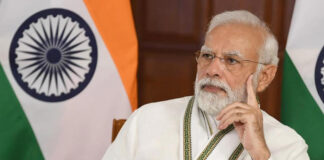By Geeta Goindi – Special to India This Week
WASHINGTON – Museum goers are in for a treat this year at the renowned Smithsonian Institution where Indian art and culture will be presented in all its brilliance and finery! The occasion is the 25th anniversary celebrations of the Arthur M. Sackler Gallery on the National Mall.
By Geeta Goindi – Special to India This Week
WASHINGTON – Museum goers are in for a treat this year at the renowned Smithsonian Institution where Indian art and culture will be presented in all its brilliance and finery! The occasion is the 25th anniversary celebrations of the Arthur M. Sackler Gallery on the National Mall.
At a press luncheon, it was announced that the Smithsonian has received a gift to the tune of $5 million from Dame Jillian Sackler, the New-York based philanthropist and widow of Arthur M. Sackler, after whom the Gallery is named. It will be used to support the position of the director and all the incredible programs that are coming up this year at the Sackler and adjacent Freer Gallery of Art, which together constitute the Smithsonian’s museums of Asian art.
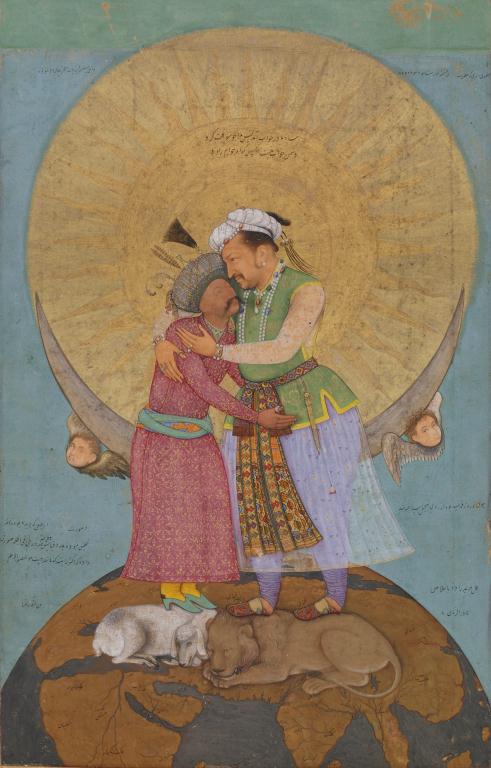
Emperor Jahangir embracing Shah Abbas of Persia. From the Saint Petersburg Album.
By Abu’l Hasan. India, Mughal dynasty, ca. 1618.
There will be 3 major highlights as follows: ‘Japan Spring’ exhibitions coinciding with the Cherry Blossoms, in March; ‘Indian Summer’, beginning in July; and ‘Arabian Autumn’, in October. For art lovers, Indian Summer will feature the exhibition, ‘Worlds within Worlds: Imperial Paintings from India and Iran’, exquisite folios and paintings from the Mughal era, on display at the Sackler Gallery from July 28 through September 17.
Our readers can also choose from a whole array of interesting and exciting events that have been lined up: a Raj Kapoor Film Festival; Indian musical performances; and lectures by Milo Beach, pre-eminent Mughal painting historian and former director of the Sackler.
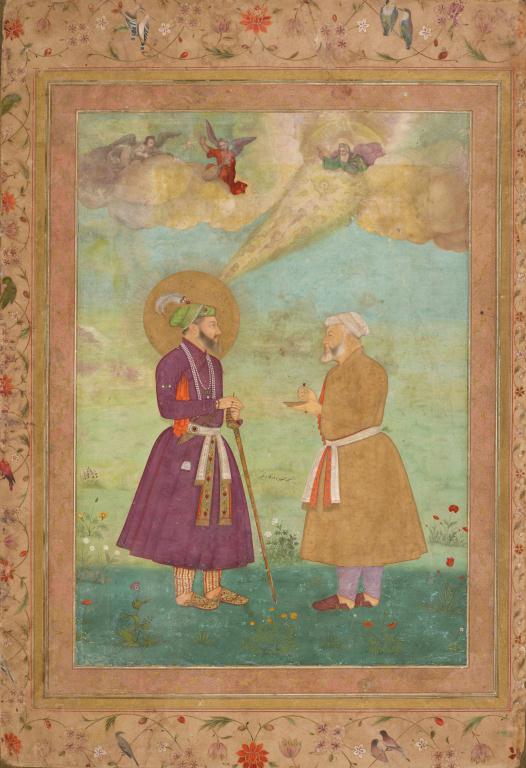
Shah Jahan with Asaf Khan. From the Late Shah Jahan Album.
By Bichitr. India, Mughal dynasty, ca. 1640.
At the press meet, Debra Diamond, associate curator of South and Southeast Asian art at the Freer and Sackler galleries, noted that the exhibition, Worlds within Worlds, “has a strong narrative framework which tells the story of how the three greatest Mughal patrons – the emperors Akbar, Jahangir and Shah Jahan – nurtured an extraordinary school of painting, between 1556 and 1657, as they built the empire that reigned over much of the Indian subcontinent till the mid 19th century”.
Regarding the title, ‘Worlds within Worlds’, she explained, it was chosen “to evoke the Indian emperors’ strong sense of themselves as world rulers, to also evoke the sophisticated layering of multiple images within single folios and also the repeated references to Persian and European styles and motifs”. The exhibition will highlight how Mughal rulers played with innovation and tradition. For instance, artistes created a magnificent folio from Persian calligraphy which they cut up in cloud shapes, illuminated with small flowers and then set into a border that nestles drawings based on European engravings.
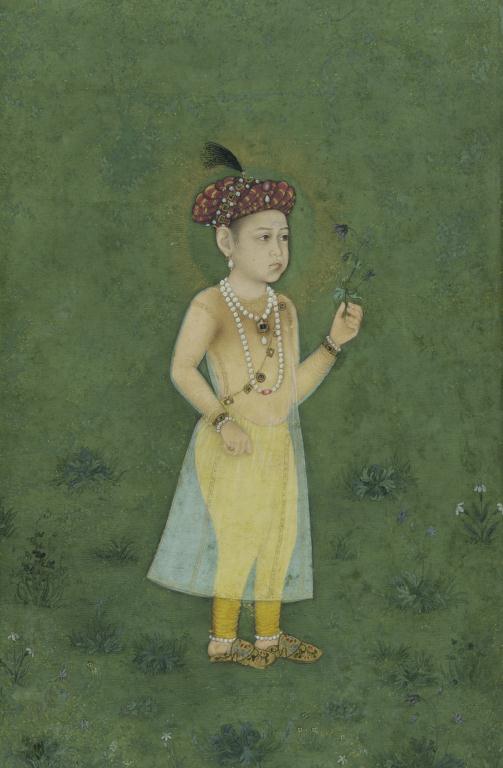
Humayun Seated in a Landscape. From the Late Shah Jahan Album.
By Payag. India, Mughal dynasty, ca. 1650.
Diamond pointed out that while the Sackler and Freer galleries together have one of the world’s great collections of Mughal and Persian paintings, such masterpieces are usually stored in order to preserve their brilliance. Not so, this summer!
“I am excited to announce that the 25th anniversary provides an occasion to bring together almost 50 of these masterpieces”, Diamond told the press corps. “For seven weeks, from July to September, ‘Worlds within Worlds’ will invite viewers to savor the painterly perfection achieved by India and Iran’s best artistes between the 15th and 17th centuries. Over these centuries, Indian and Persian rulers commissioned some of the world’s most exquisite manuscripts, usually small, often costly beyond reckoning, each volume containing jewel-like paintings and elegant calligraphy set within wonderfully illuminated borders. As expressions of individual ambitions, ideals of beauty, intellectual fascinations and constructions of political identities, they will delight the mind! And their virtuosity … will dazzle the eye”!
We would like to mention here that Mughal art is quintessentially Indian, regardless of the myriad influences that shaped it.
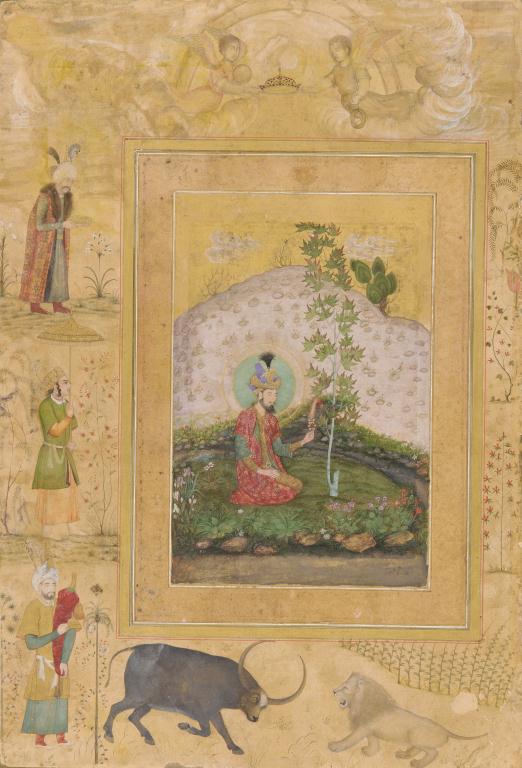
Prince Shah Shuja. From the Late Shah Jahan Album. India, Mughal dynasty, ca. 1650
In his opening remarks at the press luncheon, Julian Raby, director of the Freer and Sackler galleries, mentioned that “the Smithsonian Castle is framed by a pair of art museums symbolizing what has always been true, i.e., the Smithsonian’s dedication to global issues and world history”.
Regarding upcoming events, he noted that the “Japan Spring exhibition marks the centenary of the original gift of Cherry Blossoms from the people of Japan to the United States … After a Japanese Spring, what can be better than an Indian Summer? We have ‘Worlds within Worlds’ as a way of highlighting the extraordinary strengths of the combined Sackler and Freer collections”, he said.
Wayne Clough, secretary of the Smithsonian, recalled that in September 1977, the Sackler Gallery was founded thanks to a remarkable gift by Arthur M. Sackler. “It was a transformative gift that continues to offer educational opportunities for people of all ages”, he said. Effusively thanking Dame Jillian Sackler for her generosity, he noted that the new gift of $5 million will enable all visitors to see innovative exhibitions, the wonderful public programs while many more can partake online.
Clough underscored that the Smithsonian is particularly trying to reach out to the young audience through programs like ‘Asia After Dark’.
A note to our readers: The Sackler Gallery, located at 1050 Independence Ave., SW, and the adjacent Freer Gallery of Art, located at 12th Street and Independence Ave., SW, are on the National Mall in Washington (Metro: Smithsonian). Hours are from 10:00 a.m. to 5:30 p.m. daily, except Christmas, and admission is free. For more information, head to www.asia.si.edu or call 202-633-1000.
Courtesy: "INDIA THIS WEEK" – Washington D.C. based Newspaper / Photo Credit: Smithsonian Institution









































































































